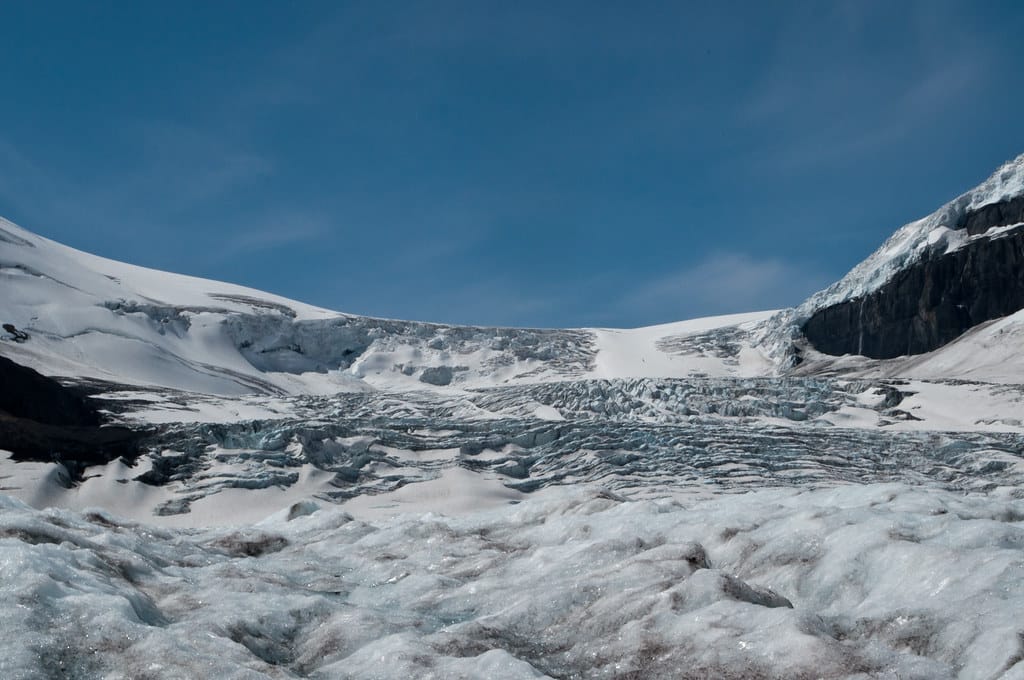Arctic Glaciers Face 'Terminal' Decline As Microbes Accelerate Ice Melt
Scientists have discovered that microscopic organisms are dramatically accelerating the melting of Arctic glaciers, creating a feedback loop that could push these ancient ice formations into irreversible decline. This groundbreaking research reveals how algae and bacteria are transforming pristine white ice into dark, heat-absorbing surfaces, fundamentally altering the Arctic's ability to reflect sunlight back to space.
The Microbial Threat Hidden in Plain Sight
For decades, climate scientists have focused on rising temperatures as the primary driver of Arctic ice loss. However, new research published in leading glaciology journals shows that microorganisms are playing an unexpectedly crucial role in accelerating melt rates across Greenland and Arctic Canada.
These microscopic life forms, including various species of algae, cyanobacteria, and other microbes, colonize the surface of glaciers during warmer months. As they multiply, they create dark patches and biofilms that dramatically reduce the ice's albedo – its ability to reflect solar radiation.
Dr. Laura Perini from the University of Southern Denmark, who has studied microbial communities on Greenland's ice sheet, explains that these organisms can reduce surface reflectivity by up to 13%. "What we're seeing is a biological acceleration of a physical process," she notes. "The darker the ice becomes, the more heat it absorbs, creating perfect conditions for even more microbial growth."
A Vicious Cycle Emerges
The relationship between microbes and ice melt creates a dangerous positive feedback loop. As global temperatures rise, longer melt seasons provide more liquid water and nutrients for microbial communities to thrive. These expanding colonies darken larger areas of ice surface, which absorb more solar energy, leading to increased melting and even better conditions for microbial growth.
Research from the Geological Survey of Denmark and Greenland indicates that microbial darkening could be responsible for accelerating ice loss by 10-15% in heavily colonized areas. On Greenland's ice sheet alone, this biological contribution to melting could add several billion tons of additional water to global sea levels annually.
Global Implications Beyond the Arctic
The implications extend far beyond the Arctic region itself. Greenland's ice sheet contains enough frozen water to raise global sea levels by approximately 7.4 meters if completely melted. While total melting would take centuries, the acceleration caused by microbial activity is pushing these timelines forward.
Coastal cities worldwide are already grappling with rising seas, and this biological acceleration of ice loss compounds existing challenges. From Miami to Venice, from Bangladesh to small Pacific island nations, communities face increased flooding risks as Arctic melt rates exceed previous projections.
The economic costs are staggering. The National Oceanic and Atmospheric Administration estimates that each centimeter of sea level rise costs the U.S. economy billions in infrastructure damage, coastal protection measures, and property value losses.
Racing Against Time for Solutions
Scientists are now racing to understand and potentially mitigate this microbial contribution to ice loss. Some researchers are investigating whether introducing competing microorganisms or applying reflective materials could help restore the ice's natural albedo.
However, the scale of intervention required presents enormous challenges. Greenland's ice sheet covers over 1.7 million square kilometers – an area roughly five times the size of Germany. Any effective treatment would need to be environmentally safe, cost-effective, and deployable across vast, remote regions.
Climate models are also being updated to incorporate these biological factors. Previous projections based solely on temperature increases may have underestimated the speed of Arctic ice loss, requiring urgent revisions to sea level rise predictions and adaptation strategies.
The Path Forward
This discovery underscores the complex, interconnected nature of climate change. As human activities continue warming the planet, we're triggering biological processes that accelerate the very changes we're trying to address.
The microbial acceleration of Arctic ice melt represents more than just an interesting scientific discovery – it's a stark reminder that climate tipping points may arrive sooner than anticipated. For policymakers, coastal communities, and the global community, this research emphasizes the critical importance of rapid emissions reductions and proactive adaptation planning.
The race to preserve Arctic ice has become a race against microscopic organisms that, ironically, are thriving in the warming world we've created. Understanding and addressing this biological dimension of climate change may prove crucial to preventing the most catastrophic outcomes of our warming planet.
